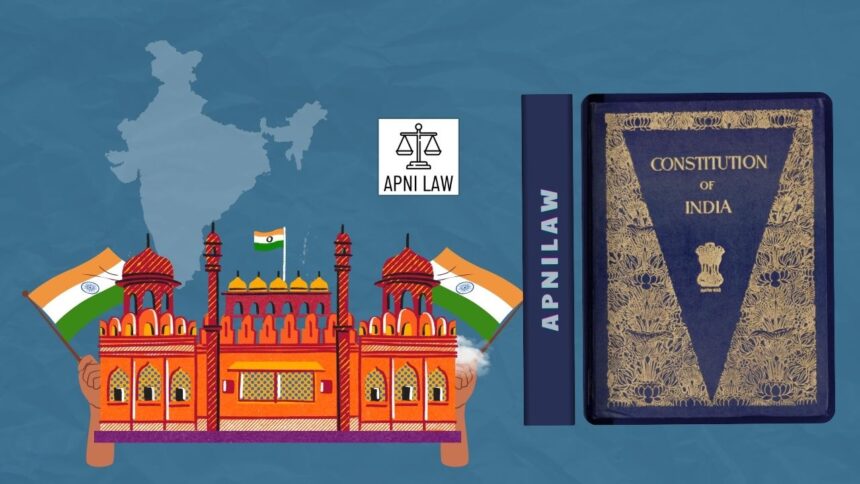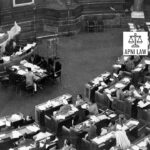The 44th Amendment Act of 1978 stands as one of the most important corrective steps in Indian constitutional history. It was passed to undo the excesses of the Emergency period (1975–77) and to protect democracy from future authoritarian misuse. During the Emergency, civil liberties were suspended, opposition leaders were jailed, and the executive exercised unchecked power. Citizens experienced severe restrictions on freedom of speech, press, and property rights. The amendment, passed by the government of Morarji Desai, aimed to restore constitutional balance and prevent any repetition of such abuse. For this reason, it is widely considered a milestone that reinforced the principles of democracy, accountability, and constitutionalism in India.
What Was the Background of the 44th Amendment?
The background of the 44th Amendment lies in the extraordinary events of the mid-1970s. Prime Minister Indira Gandhi declared a national Emergency in 1975 after a court verdict threatened her continuation in office. The proclamation of Emergency suspended fundamental rights, curtailed press freedom, and concentrated power in the hands of the executive. The Constitution was amended through the 42nd Amendment Act of 1976, which gave Parliament unlimited power, reduced judicial independence, and extended the tenure of legislatures.
These changes deeply disturbed the balance of the Constitution. Citizens lost faith in democratic protections. The defeat of Indira Gandhi in the 1977 general elections marked a turning point. The new government under Morarji Desai came to power promising to reverse authoritarian changes. The 44th Amendment Act of 1978 was its most powerful response. It sought to dismantle the legal structures that had enabled the Emergency and to guarantee that future governments could not repeat those abuses.
How Did It Restrict the Power to Proclaim Emergency?
The Emergency provisions were the most controversial aspect of Indira Gandhi’s regime. Under the 42nd Amendment, the government could impose Emergency on vague grounds of “internal disturbance.” This phrase gave the executive wide latitude to justify extraordinary measures. The 44th Amendment Act removed this ground and replaced it with “armed rebellion.”
Now, Emergency could only be declared in cases of war, external aggression, or armed rebellion. This ensured that ordinary political protests, strikes, or civil unrest could not be exaggerated to justify suspension of fundamental rights. The amendment also required that the President could proclaim Emergency only after receiving written advice from the entire Cabinet. Earlier, the Prime Minister could act alone. This change introduced collective responsibility and limited arbitrary decisions.
The amendment also tightened rules for parliamentary approval of Emergency. It mandated that both Houses of Parliament must approve such a proclamation by a special majority, not a simple majority. It further required periodic renewal every six months, preventing indefinite continuation of Emergency powers. These changes created strong safeguards against executive overreach.
How Did It Protect Fundamental Rights?
The amendment gave special attention to restoring and protecting Fundamental Rights. During the Emergency, Article 19, which guaranteed freedoms such as speech, assembly, and association, was suspended. The 44th Amendment declared that Articles 20 and 21, the right to life and personal liberty, could never be suspended, even during Emergency. This meant that no government could take away the basic dignity of citizens, regardless of the situation.
The amendment also addressed the right to property. Earlier, property was a Fundamental Right under Article 31. The government had used this right to justify arbitrary land acquisition during the Emergency. The 44th Amendment removed property from the list of Fundamental Rights and converted it into a legal right under Article 300A. Citizens could still own property, but disputes over it would no longer disrupt governance. This step balanced individual interests with social justice goals.
The amendment also restored press freedom. It allowed the media to report freely on parliamentary proceedings. This ensured transparency in lawmaking and made it difficult for governments to operate in secrecy. By reinforcing these rights, the 44th Amendment rebuilt trust in constitutional protections.
What Safeguards Did It Introduce Against Preventive Detention?
Preventive detention had been widely misused during the Emergency to silence critics and detain opposition leaders without trial. The 44th Amendment imposed restrictions on this practice. It allowed preventive detention for a maximum of three months unless an Advisory Board of judges approved its continuation.
This safeguard ensured judicial oversight over executive detention orders. The amendment also made it harder for the government to use detention laws indefinitely. By doing so, it protected personal liberty and prevented arbitrary arrests that had become common during the Emergency years.
How Did It Impact the Tenure of Legislatures and Executive Powers?
The Emergency-era 42nd Amendment had extended the tenure of the Lok Sabha and State Assemblies from five to six years. This gave ruling parties longer control without facing elections. The 44th Amendment reversed this change and restored the original five-year term. Regular elections were reinstated as a cornerstone of Indian democracy.
The amendment also ensured that the President and Governors had to act according to the written advice of the Council of Ministers. This provision removed ambiguities but also reinforced the principle of responsible government. At the same time, the amendment prevented concentration of unchecked power by making collective Cabinet advice mandatory for sensitive decisions like Emergency proclamations.
How Did It Strengthen Judicial Independence?
Judicial independence had been one of the worst casualties of the Emergency. The 42nd Amendment had curtailed the powers of the Supreme Court and High Courts by limiting their ability to review laws and amendments. The 44th Amendment restored judicial review. It reaffirmed that the judiciary had the authority to strike down unconstitutional laws and executive actions.
The amendment also emphasized that fundamental features of the Constitution could not be altered by transient parliamentary majorities. This idea aligned with the Basic Structure Doctrine established in Kesavananda Bharati’s case in 1973. By reinforcing this doctrine, the amendment prevented future governments from tampering with essential democratic values.
How Did It Reinforce Democratic Institutions?
Beyond specific provisions, the 44th Amendment sent a strong political message. It signaled that India had learned from the mistakes of the Emergency. By restoring the tenure of legislatures, strengthening fundamental rights, and limiting executive powers, the amendment rebuilt public faith in democratic institutions.
It also reaffirmed the supremacy of the Constitution over individuals and governments. No matter how powerful a leader or party might be, the Constitution would remain the ultimate safeguard of citizens’ liberties. The amendment thus reinforced the principles of accountability, separation of powers, and federal balance.
What Is the Legacy of the 44th Amendment?
The legacy of the 44th Amendment lies in its corrective role. It undid many of the undemocratic provisions introduced by the 42nd Amendment. It made Emergency powers more difficult to misuse, restored the balance between rights and duties, and placed strong limits on arbitrary executive authority.
While some critics argued that it did not go far enough, most scholars recognize it as a turning point. It created a stronger framework for protecting democracy. Provisions like the non-suspension of life and liberty rights during Emergency remain powerful symbols of constitutional resilience.
In the decades since, the amendment has served as a reminder of the fragility of democracy and the need for constant vigilance. It showed that constitutional safeguards must evolve to meet challenges, but they must also preserve the spirit of liberty and justice.
For any specific query call at +91 – 8569843472
Conclusion
The 44th Amendment Act of 1978 played a decisive role in restoring democracy in India after the trauma of the Emergency. It restricted the grounds for Emergency, made Cabinet advice mandatory, protected life and liberty, imposed checks on preventive detention, restored the tenure of legislatures, and revived judicial independence. It reinforced civil liberties, ensured accountability, and reestablished constitutional balance.
By undoing the distortions of the 42nd Amendment and strengthening democratic safeguards, the 44th Amendment reestablished faith in the Constitution. It stands as a reminder that even in moments of crisis, democracy must remain resilient. Its enduring legacy lies in ensuring that India’s constitutional order cannot be undermined by authoritarian impulses.








